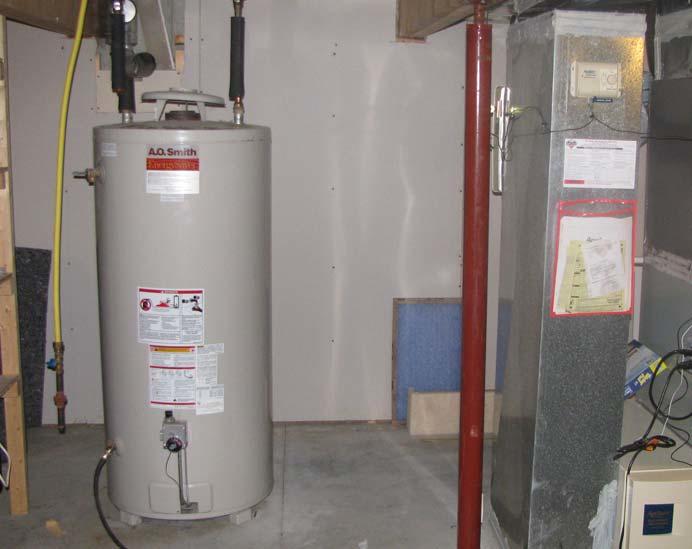Ways to Maintain Your Home's Hot Water System Functioning Well
Free EstimatesThis article following next about What Kind of Maintenance Do Water Heaters Need? is amazingly entertaining. Don't bypass it.

Warm water is vital for day-to-day comfort, whether it's for a revitalizing shower or washing dishes. To guarantee your warm water system runs effectively and lasts much longer, regular maintenance is vital. This short article provides functional tips and insights on just how to maintain your home's hot water system to prevent disturbances and pricey repairs.
Introduction
Preserving your home's warm water system could appear overwhelming, but with a few basic actions, you can ensure it operates smoothly for several years to find. This overview covers every little thing from understanding your hot water system to DIY upkeep pointers and understanding when to call professional help.
Significance of Keeping Your Warm Water System
Normal maintenance not just expands the life-span of your hot water system but also ensures it operates effectively. Neglecting maintenance can result in reduced effectiveness, greater power costs, and also premature failure of the system.
Signs Your Hot Water System Requirements Maintenance
Understanding when your hot water system needs focus can protect against significant concerns. Keep an eye out for indicators such as irregular water temperature level, weird sounds from the heater, or rusty water.
Flushing the Water Heater
Flushing your hot water heater gets rid of debris build-up, improving performance and prolonging its life.
Checking and Replacing Anode Rods
Anode poles prevent deterioration inside the container. Evaluating and changing them when broken is crucial.
Facility Problems Requiring Expert Assistance
Examples include significant leakages, electrical problems, or if your hot water heater is continually underperforming.
Regular Expert Maintenance Benefits
Specialist upkeep can consist of detailed examinations, tune-ups, and making certain compliance with safety criteria.
Evaluating and Changing Temperature Level Settings
Readjusting the temperature level settings ensures optimum performance and safety.
Do It Yourself Tips for Upkeep
You can carry out numerous upkeep tasks on your own to keep your warm water system in top problem.
Checking for Leakages
Frequently inspect pipelines and connections for leakages, as these can bring about water damage and greater expenses.
Understanding Your Warm Water System
Before diving right into maintenance jobs, it's practical to understand the standard components of your warm water system. Generally, this consists of the water heater itself, pipelines, anode poles, and temperature controls.
Regular Monthly Upkeep Tasks
Routine month-to-month checks can assist capture minor concerns before they rise.
Evaluating Stress Relief Valves
Checking the stress relief valve guarantees it works appropriately and avoids too much pressure accumulation.
Shielding Pipes
Protecting hot water pipelines lowers heat loss and can conserve power.
When to Call a Professional
While do it yourself upkeep is helpful, some issues need expert proficiency.
Final thought
Normal maintenance of your home's hot water system is necessary for effectiveness, long life, and cost savings. By adhering to these tips and knowing when to seek expert help, you can ensure a reputable supply of warm water without unanticipated disruptions.
How to Maintain an Instant Hot Water Heater
Before tinkering with your hot water heater, make sure that it’s not powered on. You also have to turn off the main circuit breaker and shut off the main gas line to prevent accidents. Also turn off the water valves connected to your unit to prevent water from flowing into and out of the appliance. 2. When you’re done, you have to detach the purge valves’ caps. These look like the letter “T†and are situated on either side of the water valves. Doing so will release any pressure that has accumulated inside the valves while at the same time avoid hot water from shooting out and burning your skin. 3. When the purge valves’ caps are removed, you have to connect your hosing lines to the valves. Your unit should have come with three hoses but if it didn’t, you can purchase these things from any hardware or home repair shops. You can also get them from retail stores that sell water heating systems. Read the user’s manual and follow it to complete this task properly. When the hosing lines are connected, open the purge port’s valves. 4. You should never use harsh chemical cleaners or solutions when cleaning your unit. Make use of white vinegar instead. It should be undiluted and you’ll probably use about 2 gallons. 5. Now flush your water heater. This task should probably take about 40 minutes. We can’t give you specific directions for this because the procedure is carried out depending on the type, model and brand of your heater. With that being said, refer to the user’s manual. 6. When you’re done draining the unit, you have to turn off the purge port valves again. Remove the hosing lines that you earlier installed on each of the water valves. Put the valve caps (purge port) back in their respective places and be very careful so as not to damage the rubber discs that are found inside these caps. 7. Now that everything’s back in place, check your user’s manual again to find out how to reactivate your water heating system. 8. Once it is working, turn one of your hot water faucets on just to let air pass through the heater’s water supply pipes. Leave the tap on until water flows smoothly out of it. https://www.orrplumbing.com/blog/2014/september/how-to-maintain-an-instant-hot-water-heater/

Do you enjoy more info about Tips on Maintaining a Water Heater? Try leaving a remark below. We'd be pleased to see your responses about this blog. We hope that you come back again in the future. In case you enjoyed our page if you please be sure to pass it around. We take joy in your readership.
Click Here